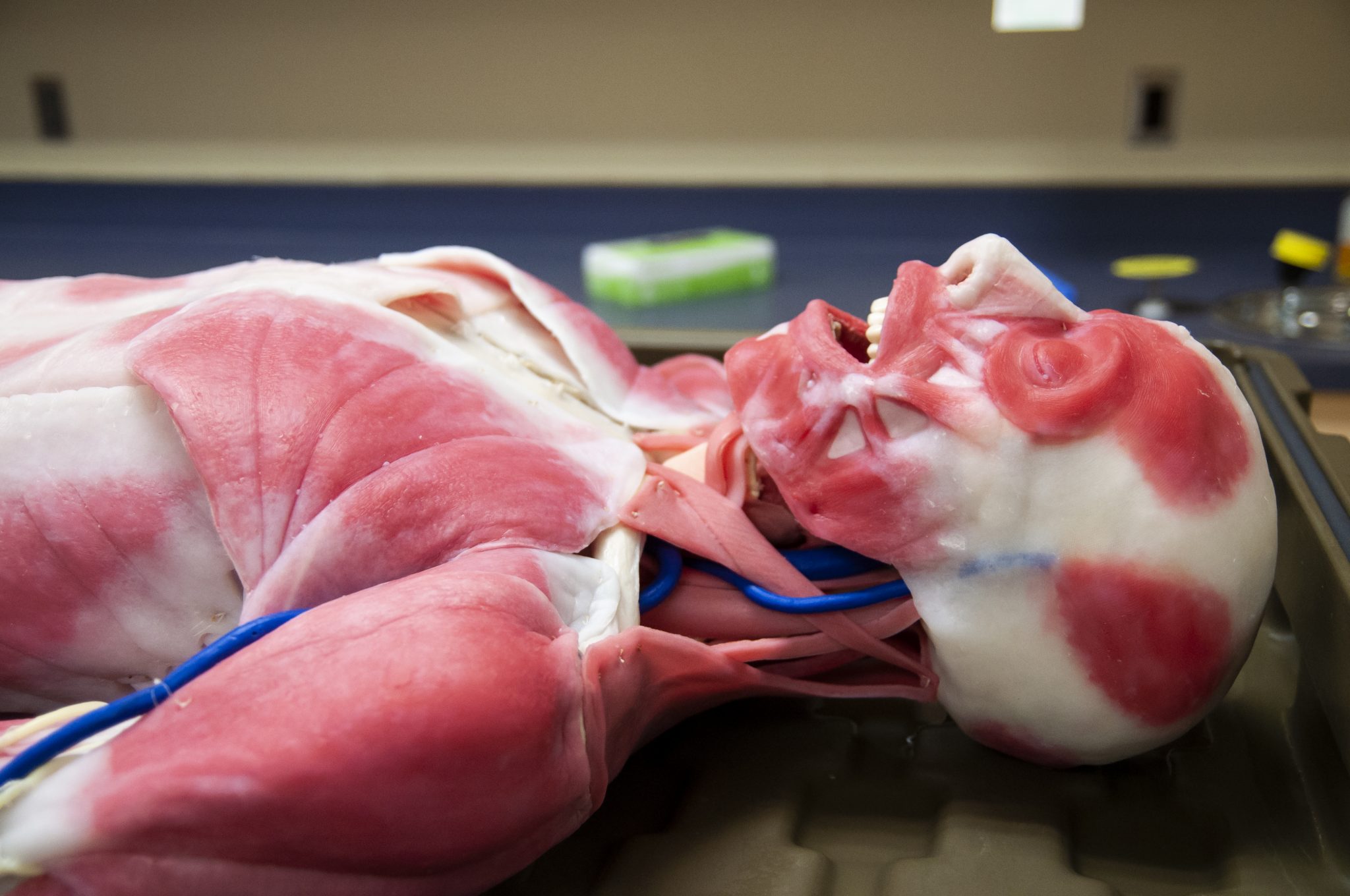Laurier’s newest student “bodies”: Kinesiology students get new, synthetic

The departments of kinesiology and health sciences at Laurier, along with students from other faculties currently in anatomy courses, have been given the gift of two synthetic cadavers named Sara and Rita, made by a company in Florida called SynDaver.
“They are for our human anatomy course and that services both kinesiology and health sciences students, that’s the vast majority of students in these labs but there are also a handful of biology and psychology students in these courses,” said Diane Gregory, associate professor in both the faculty of kinesiology and the faculty of health sciences at Laurier.
Although the University of Waterloo has a full cadaver lab at their institution, Laurier is the first school in Canada to have these synthetic cadavers. Schools from all across the country are curious as to how these bodies move.
“It’s not even that I think they are better than a textbook. I think they’re superior to the models that we currently have in the lab or at least they’re going to enhance the resources that we currently have — and it’s because of the tactile feedback that you get,” Gregory said.
“The models we currently have are hard plastic. To visualize the muscles that are below, you pop a piece off of the model and obviously that’s not realistic in real life.”
“Whereas with the synthetic cadavers, everything is malleable and feels similar to real tissues; I’ve worked with human cadavers before, so I can make the comparison.”
“You can also physically push muscles aside to see what’s below and that helps students be able to see where structures are relative to one another.”
The cost of these cadavers can range from anywhere between $70,000 to $90,000, but they also come with a lifetime warranty and have a maintenance fee attached, which means the cadavers can be sent back to Florida every summer to fix any loose ends so the cadavers do not need to be repurchased.
The faculties of kinesiology and health science would, however, like to have programs where the money they make with use of the cadavers from others could be reinvested into the program to purchase more.
“We’re starting an outreach program, starting in the new year sometime,” Cinelli said.
“We’re partnering with UW, as they already offer an outreach program with their cadaver lab and their lab coordinators came to visit our synthetic cadavers and loved them,” said Michael Cinelli, associate professor in kinesiology at Laurier.
“There are 25 schools on their waiting list that would love to come see our synthetic cadavers, so we have a potential of 25 schools that want to come see them – we just have to schedule a date and time. That’s how UW has made use of their cadaver labs too.”
Representatives from schools like Memorial University in Newfoundland have already inquired and scheduled times to come see the cadavers, as Laurier is the only school to have two full synthetic human cadavers, whereas other labs have only part — or synthetic animal — cadavers.
“This is the future, I think, of anatomy labs. There was a time where people were moving towards a hybrid approach where they were using a virtual kind of anatomy — and we were thinking about that too, because we knew we were never going to get a cadaver lab like UW so we wondered what we could give them,” Cinelli said.
“There’s a lot you can learn by reading, but most of your learning will come from experiencing and getting involved and this is one way that they will experience anatomy.”
“You have to get in there and feel them – these are learning tools and you won’t forget what you feel,” he said.
Hayley is the former News Director. She is an aspiring sports journalist who started writing for The Cord in the sports section. She loves college football, spinach dip, and always being right.
Byline: Hayley McGoldrick

